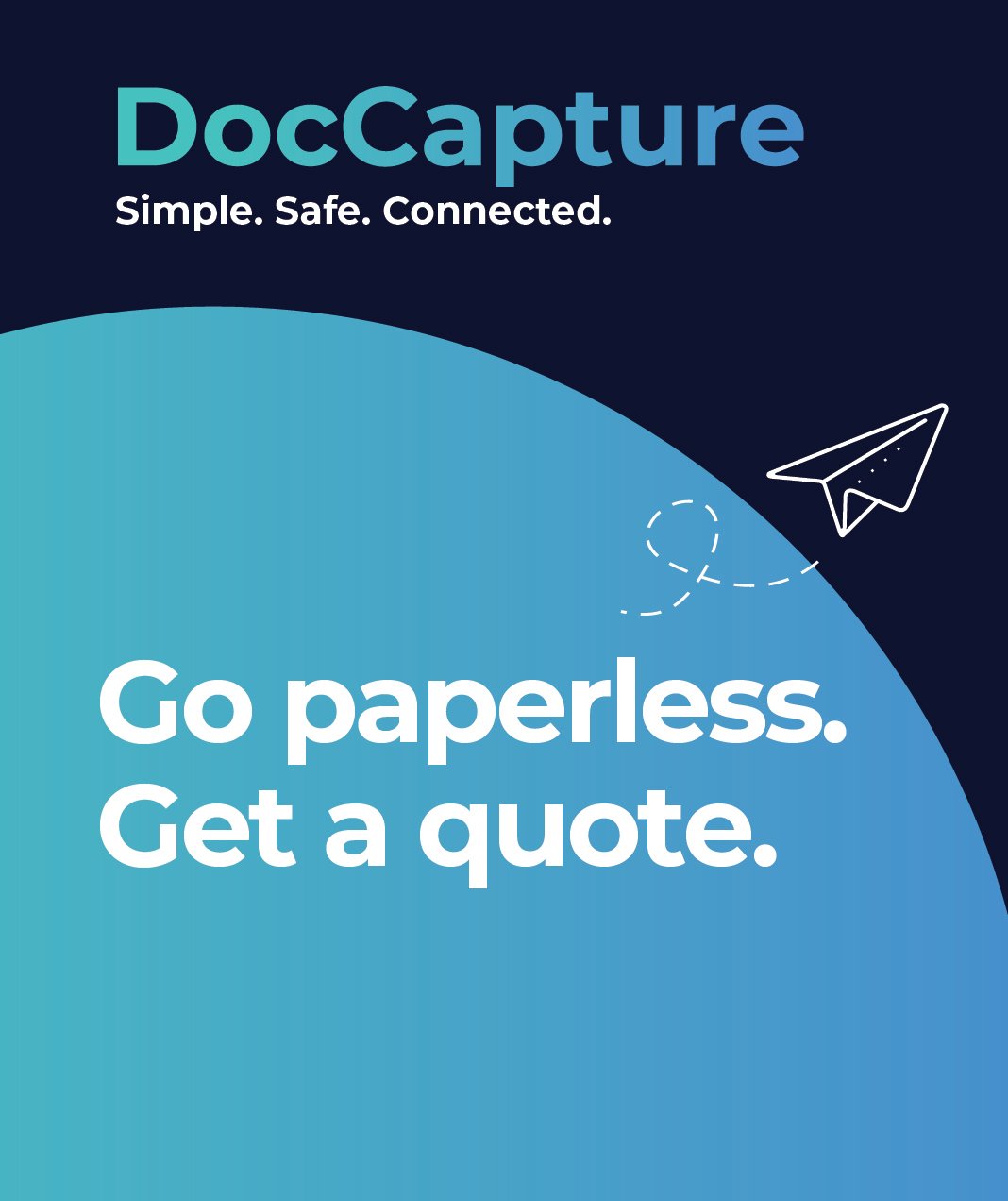Streamlining Loan Processing with Digitized Documents
Table of contents
For large financial institutions, loan processing remains one of the most document-intensive and time-sensitive functions. With mounting pressure to deliver faster approvals while maintaining strict regulatory compliance, many banks, insurance companies, and investment firms are rethinking their approach to document management. Traditional paper-based workflows are no longer sustainable in an era defined by digital transformation and customer expectations for real-time service.
Streamlining loan processing with digitized documents is more than a technological upgrade—it's a strategic move toward operational efficiency, risk reduction, and enhanced customer satisfaction. By converting physical documents into digital assets, institutions can automate approvals, improve data accuracy, and gain instant access to essential information across departments. For CIOs, Compliance Officers, and Business Process Managers alike, the benefits of adopting digital workflows are both measurable and mission-critical.
The Efficiency Gains of Digitized Loan Workflows
In a traditional lending environment, documents must be manually collected, verified, reviewed, and stored—a process riddled with bottlenecks, duplication, and the constant risk of human error. Digitizing these documents transforms loan workflows into a seamless, automated system that accelerates decision-making and reduces turnaround times.
Faster Approvals with Fewer Errors
By enabling instant document retrieval and automated data extraction, digitized workflows drastically cut the time it takes to move a loan application from submission to approval. Optical Character Recognition (OCR) and intelligent data capture eliminate the need for manual entry, minimizing the potential for costly mistakes.
For example, institutions using loan document scanning services and mortgage document scanning services from DocCapture report shorter cycle times and improved staff productivity—key outcomes for organizations balancing speed with compliance.
Enhanced Workflow Integration
Digital loan files can be easily integrated into existing loan origination systems (LOS), customer relationship management (CRM) platforms, or compliance tools. This allows for automated routing of documents to appropriate reviewers, real-time tracking of application progress, and secure storage of sensitive financial data.
Financial document scanning services from DocCapture are designed to meet the rigorous demands of financial institutions, ensuring seamless interoperability with industry-standard platforms while upholding strict security protocols.
Cost Savings Through Streamlined Operations
Reducing the need for physical storage, mail handling, and manual labor translates into significant cost savings. Digital workflows not only eliminate printing and shipping expenses but also free up resources that can be redirected toward higher-value tasks like risk analysis and client engagement.
These benefits are detailed further in DocCapture’s post on how scanning documents can save financial institutions time and money.
Strengthening Compliance and Security with Digital Workflows
In the financial sector, compliance isn’t optional—it’s a complex and evolving requirement that institutions must meet to avoid penalties, reputational damage, and operational disruption. Streamlining loan processing with digitized documents gives compliance officers and data security managers the tools they need to stay ahead of regulations while maintaining robust security protocols.
Easier Regulatory Adherence
Regulatory frameworks such as the Gramm-Leach-Bliley Act (GLBA), the Sarbanes-Oxley Act (SOX), and local data protection laws demand accurate recordkeeping, audit trails, and quick access to historical loan data. Digitized documents enable real-time monitoring, automated retention schedules, and simplified reporting—making it far easier to comply with these requirements.
DocCapture outlines this in more detail in The Role of Document Scanning in Financial Services Regulation, which explores how digital systems help institutions respond to audits and legal inquiries with confidence.
Fortified Data Security
Paper documents are inherently vulnerable to theft, loss, fire, or unauthorized access. In contrast, digitized files can be encrypted, access-controlled, and stored in geographically redundant data centers. This approach significantly reduces risk, especially in scenarios involving high-value loan files or sensitive client data.
Solutions like Financial Document Scanning from DocCapture implement end-to-end encryption and secure chain-of-custody protocols to ensure the highest level of protection.
Improved Disaster Recovery and Continuity
Should a natural disaster or cyber incident occur, having digitized documents in a secure cloud environment allows institutions to recover critical files quickly and resume operations with minimal downtime. This kind of resiliency is no longer optional—it’s a strategic advantage in a risk-sensitive industry.
For insights on safeguarding digital records, visit DocCapture’s article on Financial Records in the Cloud: Safeguarding and Accessibility.
Enhancing the Customer Experience Through Digital Loan Processing
In an era where customers expect near-instantaneous service, streamlining loan processing with digitized documents enables financial institutions to meet—and often exceed—those expectations. A faster, more transparent loan journey not only boosts satisfaction but also strengthens client loyalty and institutional reputation.
Reduced Wait Times and Faster Communication
Digitized workflows enable quicker document verification, accelerated approvals, and real-time status updates. Customers no longer have to wait days or weeks for responses or make repeated phone calls to check on application progress. Automated notifications and digital access portals keep borrowers informed and engaged.
This is especially relevant for mortgage lenders, as detailed in DocCapture’s article on Document Scanning Helps Mortgage Lenders Reach Digital Transformation, where lenders gain a competitive edge by shortening approval timelines.
Increased Transparency and Accuracy
Clients are more confident when they can see exactly what’s happening with their loan. Digitized documentation supports greater transparency through audit trails and digital signatures, giving borrowers assurance that their applications are handled professionally and securely.
Institutions leveraging services like document scanning streamlines mortgage and loan document processing can also ensure higher data accuracy, which means fewer back-and-forth corrections with clients.
Omnichannel Access and Modern Convenience
From uploading documents via mobile apps to e-signing agreements remotely, digital loan processing aligns with how modern consumers prefer to interact. Borrowers appreciate the ability to complete financial transactions anytime, anywhere—without stepping foot in a branch or mailing physical paperwork.
This transformation is discussed further in DocCapture’s blog on Scanning Documents Can Speed Up Loan Processing and Account Opening, showing how digital accessibility fosters a more client-friendly lending experience.
Conclusion
For today’s financial institutions, adopting digital document workflows is no longer a forward-looking initiative—it’s a competitive necessity. Streamlining loan processing with digitized documents empowers banks, insurance companies, and investment firms to work faster, reduce compliance risk, and deliver the seamless experiences modern clients expect.
Ready to revolutionize your loan processing operations?
Explore our Financial Document Scanning services and discover how DocCapture can help your institution achieve speed, compliance, and client satisfaction—without compromise.
👉 Fill out our “get a quote” form to get started today.
Share this
You May Also Like
These Related Stories

Accelerating Loan Approvals: The Power of Digital Loan Documents

How Document Scanning Services Can Streamline Mortgage and Loan Document Processing

